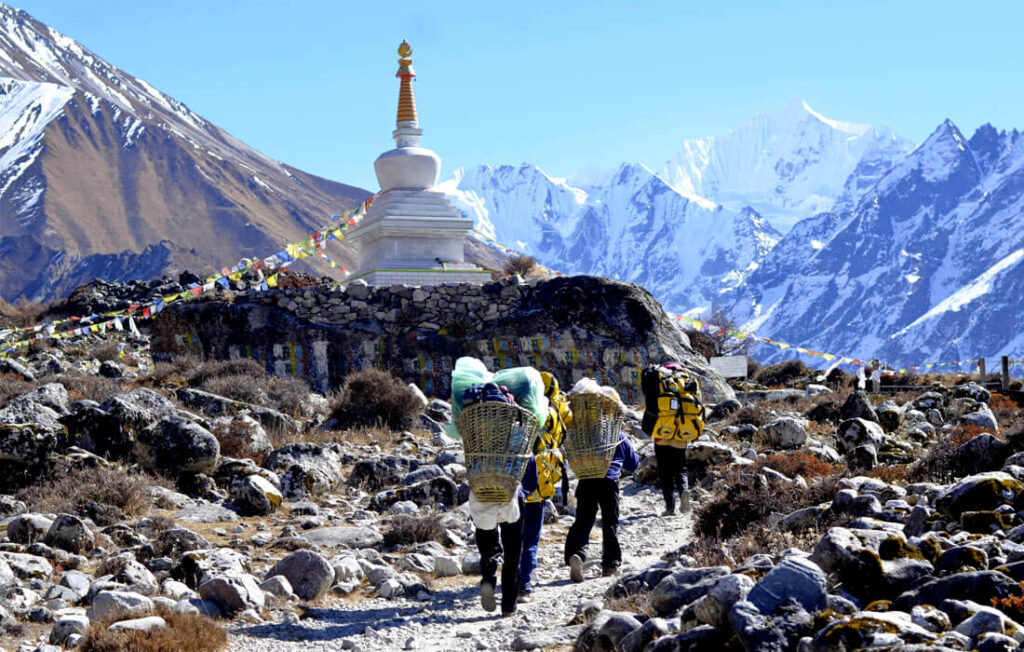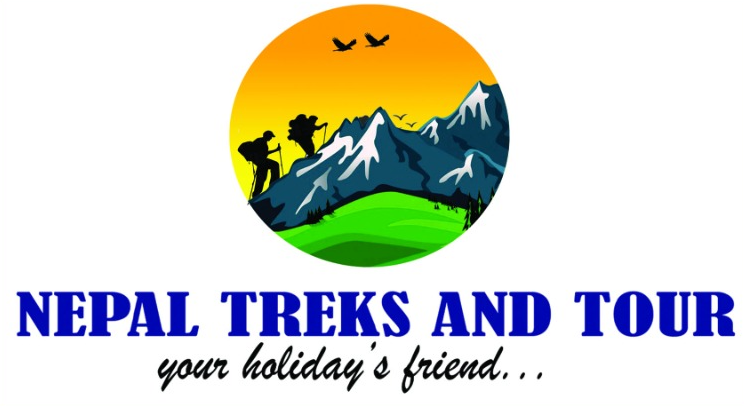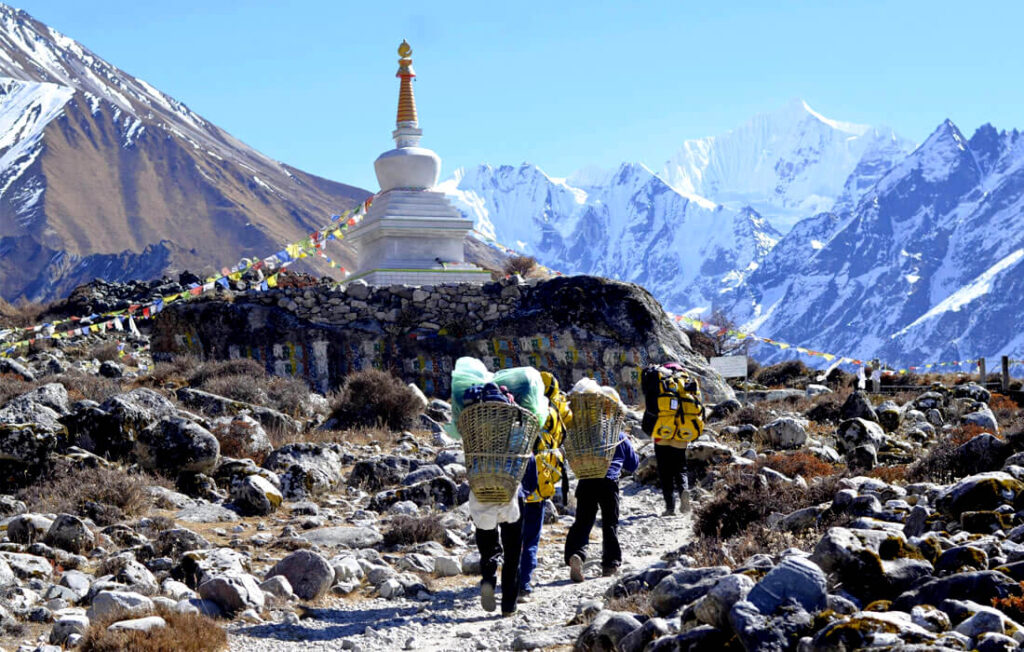The Langtang Valley Trek is one of the most scenic and accessible adventures in the Himalayas, ideal for trekkers seeking a short trek near Kathmandu with authentic cultural experiences and breathtaking mountain views. Located within the protected expanse of the Langtang National Park trek, this journey takes you through dense forests, traditional Tamang villages, and dramatic alpine landscapes, culminating in the serene beauty of Kyanjin Gompa and the panoramic summit of Tserko Ri. As a classic Langtang teahouse trek, it offers comfort, affordability, and deep immersion into local life. Perfect for those looking for an off-the-beaten-path trek in Nepal, the Langtang Trek Nepal is a hidden gem that combines natural beauty, spiritual charm, and Himalayan adventure—all within reach of the capital city.
Table of Contents
ToggleLangtang Valley Trek Overview
The Langtang Valley Trek is a moderately challenging and highly rewarding journey that takes you deep into the heart of the Langtang region trek, just north of Kathmandu. This trek offers a perfect blend of majestic Himalayan scenery, rich Tamang culture, and diverse ecosystems within the Langtang National Park trek. The trail follows the Langtang River through rhododendron and bamboo forests, alpine meadows, and yak pastures, eventually reaching the picturesque village of Kyanjin Gompa. From here, trekkers can enjoy stunning day hikes, including the popular Tserko Ri hike for panoramic mountain views. Ideal for both beginners and experienced trekkers, the Langtang Trek Nepal is a lesser-known yet unforgettable adventure suitable for those looking for a scenic and culturally immersive trek to Langtang.
Langtang Valley Trek Itinerary

Day 01: Arrival in Kathmandu (1,400m)
- Upon arrival at Tribhuvan International Airport, you’ll be welcomed by a representative from Nepal Treks and Tour and transferred to your hotel. Briefing about the Langtang Valley Trek and preparation for the journey.
Day 02: Drive from Kathmandu to Syabrubesi (1,550m) – 7 to 8 hours
- Begin your Langtang trek from Kathmandu with a scenic drive along hills, rivers, and rural villages. The road passes through Trishuli Bazaar and Dhunche before reaching the starting point, Syabrubesi.
Day 03: Trek from Syabrubesi to Lama Hotel (2,380m) – 6 to 7 hours
- Cross a suspension bridge and ascend through lush forests filled with rhododendrons and oaks along the Langtang Khola. Reach Lama Hotel by late afternoon.
Day 04: Trek from Lama Hotel to Langtang Village (3,430m) – 5 to 6 hours
- Climb gradually through forests and open fields as snow-capped peaks begin to appear. Reach the historic Langtang Village, home to the indigenous Tamang people and rebuilt after the 2015 earthquake.
Day 05: Trek from Langtang Village to Kyanjin Gompa (3,870m) – 3 to 4 hours
- Short and scenic trek to Kyanjin Gompa, a spiritual village surrounded by mountains. Visit the ancient monastery and local yak cheese factory.
Day 06: Acclimatization Day – Tserko Ri Hike (5,000m) – 5 to 6 hours round trip
- A highlight of the Langtang Valley Trek itinerary, the Tserko Ri hike offers stunning panoramic views of the Langtang Himalayan range. Return to Kyanjin for rest.
Day 07: Trek back from Kyanjin Gompa to Lama Hotel – 6 to 7 hours
- Retrace your steps through alpine forests and riverside trails back to Lama Hotel.
Day 08: Trek from Lama Hotel to Syabrubesi – 5 to 6 hours
- Descend gradually through forests and Tamang settlements back to Syabrubesi.
Day 09: Drive from Syabrubesi to Kathmandu – 7 to 8 hours
- Enjoy the return drive to Kathmandu with views of terraced fields and rural hillsides. Transfer to hotel and enjoy your evening in the city.
Day 10: Free Day in Kathmandu
- A buffer day for sightseeing or relaxation. You may choose to explore Bhaktapur, Patan, or visit Swayambhunath and Boudhanath.
Day 11: Final Departure
- After breakfast, transfer to the airport for your onward journey, marking the end of your unforgettable trek to Langtang.
Accommodation and Meals on the Langtang Valley Trek
The Langtang Valley Trek is a classic Langtang teahouse trek, meaning you’ll be staying in locally run lodges along the route. These teahouses provide simple yet comfortable accommodations, usually with twin-sharing rooms, basic bedding, and communal dining areas warmed by a yak-dung stove. Most rooms offer stunning views of the surrounding Himalayan peaks and forests.
Bathrooms are often shared, with squat or Western-style toilets depending on the location. While lower villages may offer hot showers (usually solar-heated or gas-heated for an extra charge), higher altitude areas may have limited hot water availability.
In terms of food, teahouses provide a hearty menu that keeps you energized throughout the trek to Langtang. Typical meals include:
- Breakfast: Tibetan bread, porridge, pancakes, eggs, and tea/coffee
- Lunch & Dinner: Dal Bhat (rice, lentil soup, vegetables), fried noodles, momo (dumplings), chowmein, and soups
- Snacks: Biscuits, chocolate, yak cheese, and boiled potatoes
All meals during the trek are included in the Langtang Valley Trekking package offered by Nepal Treks and Tour, ensuring you’re well-fed with fresh and hygienic food at every stop.
Vegetarian options are widely available, and we recommend avoiding meat at higher altitudes due to lack of refrigeration. Staying hydrated is crucial—boiled water, bottled water, and purification tablets are commonly used.
With cozy accommodations and nourishing meals, the Langtang Trek Nepal promises a rewarding experience both physically and culturally.
Guide and Porter During the Langtang Valley Trek
Professional Licensed Guide
- A government-certified Langtang Valley Trek guide ensures your safety, navigation, and cultural understanding throughout the trek.
- Guides are fluent in English and well-versed in local customs, geography, and flora/fauna of the Langtang region trek.
Supportive Porters
- Each porter carries up to 15–20 kg of your baggage, allowing you to enjoy the trek comfortably with a light daypack.
- Porters are experienced, insured, and treated fairly under responsible tourism guidelines.
Local Expertise
- Our guides and porters come from the local Tamang communities, adding a cultural depth to your Tamang culture trek Nepal experience.
- They offer personal stories, folklore, and insights that enrich your journey.
Emergency Preparedness
- Equipped with first aid knowledge and trained in high-altitude safety, our guides monitor your health and altitude acclimatization.
- They are your first responders in case of emergencies or evacuations.
Ethical and Responsible Tourism
- We ensure fair wages, proper gear, meals, and insurance coverage for all staff.
- Your trip supports sustainable livelihoods in the Langtang trek Nepal region.
With our reliable guides and porters, your trek to Langtang becomes a safe, informative, and culturally immersive experience.
Trekking Permits for the Langtang Valley Trek
Langtang National Park Entry Permit
Purpose: This permit grants access to the Langtang National Park, a protected area rich in biodiversity and home to various flora and fauna.
Cost:
- Foreign Nationals: NPR 3,000 per person
Where to Obtain:
- Nepal Tourism Board (NTB) offices in Kathmandu or Pokhara
- Entry points at Dhunche or Syabrubesi
Trekkers’ Information Management System (TIMS) Card
Purpose: The TIMS card is designed to ensure the safety and security of trekkers by maintaining a record of trekkers in the region.
Cost:
- Group Trekkers: NPR 1,000 per person
- Independent Trekkers: NPR 2,000 per person
Where to Obtain:
- Nepal Tourism Board (NTB) offices in Kathmandu or Pokhara
- Trekking Agencies’ Association of Nepal (TAAN) offices
Required Documents for Permit Application
- Valid passport
- Valid Nepal visa
- Two passport-sized photographs
- Details of your trekking itinerary
Additional Information
- Permits are non-transferable and must be carried with you at all times during the trek.
- There are several checkpoints along the Langtang Valley Trek where you will be required to show your permits.
- Failure to obtain the necessary permits can result in fines or being denied entry to the trekking region.
Obtaining the correct permits is crucial for a safe and enjoyable Langtang Valley Trek. Ensure you have all the necessary documents and consult with tour and trekking agency such as Nepal Treks and Tour for the most up-to-date information.
Travel Insurance for the Langtang Valley Trek
Purchasing comprehensive travel insurance is essential for anyone planning to undertake the Langtang Valley Trek. While the trek is moderately difficult, the Langtang Valley Trek altitude reaches up to 5,000 meters at Tserko Ri, which makes it critical to be prepared for potential altitude-related illnesses, accidents, or unforeseen emergencies.
What Should Your Insurance Cover?
When trekking in remote areas like the Langtang region trek, make sure your insurance includes:
- High-altitude trekking coverage (up to 5,000 meters)
- Emergency medical treatment and hospital bills
- Helicopter evacuation and rescue operations
- Trip cancellation and interruption
- Lost baggage and theft protection
- Delays due to natural disasters or strikes
Why It’s Necessary
- Even though the Langtang Trek Nepal is close to Kathmandu, the trail passes through remote alpine regions where medical facilities are limited. In case of acute mountain sickness (AMS) or serious injury, emergency evacuation by helicopter is often the only option—and it can cost thousands of dollars without insurance.
Having the right travel insurance for Langtang Valley Trek offers peace of mind and ensures you’re covered throughout your adventure in the Himalayas.
Essential Trekking Gear for the Langtang Valley Trek
Being well-prepared with the right gear is crucial for a safe and comfortable Langtang Valley Trek , especially as the trail ascends through varying altitudes and climates. Whether you’re a beginner or a seasoned hiker, a proper packing list enhances your experience on this incredible Langtang Trek Nepal adventure.
Clothing
- Base Layers: Moisture-wicking thermal tops and bottoms
- Insulating Layer: Fleece jacket or lightweight down jacket
- Outer Layer: Waterproof and windproof shell jacket and pants
- Trekking Shirts: Breathable, quick-dry materials (2–3)
- Trekking Pants: Convertible or stretchable hiking pants (2)
- Warm Hat & Gloves: Insulated and windproof
- Sun Hat & Buff/Neck Gaiter: For sun and dust protection
- Undergarments & Sports Bra (for women): Quick-drying (4–5 sets)
- Sleepwear: Comfortable warm clothes for the teahouse nights
Footwear
- Hiking Boots: Durable, waterproof, and broken-in with ankle support
- Camp Shoes/Sandals: For relaxing in teahouses
- Trekking Socks: Wool or synthetic (4–5 pairs)
- Gaiters (optional): Useful in snow or muddy trails
Trekking Gear
- Backpack (40–50L): With rain cover for daily use
- Duffle Bag
- Sleeping Bag: 4-season (rated for -10°C or lower)
- Trekking Poles: Adjustable and shock-absorbent
- Headlamp: With extra batteries
- Water Bottles and/or Hydration Bladder: 2–3 liters capacity
- Water Purification: Tablets or filters
Personal Essentials
- Sunscreen & Lip Balm: SPF 30+
- Toiletries: Biodegradable soap, toothbrush, toothpaste, tissue
- Quick-dry Towel & Wet Wipes
- Small First Aid Kit: Band-aids, painkillers, altitude meds, antiseptic
- Personal Medications
- Power Bank & Charging Cables
- Travel Insurance & Copies of Permits/Passport
Optional Items
- Camera/Phone for Photos
- Notebook & Pen
- Snacks & Energy Bars
- Book or Kindle for evening downtime
All this gear will help ensure a smooth and safe trek to Langtang. Most items can be rented or bought in Kathmandu before starting your Langtang Valley Trek from Kathmandu. At Nepal Treks and Tour, we also assist clients in organizing essential equipment and provide a sleeping bag and duffel bag on request.
Langtang Valley Trek Difficulty
The Langtang Valley Trek difficulty is considered moderate, making it a great choice for both beginner and experienced trekkers. The trek doesn’t involve any technical climbing or extreme altitudes like Everest Base Camp, but it still demands good physical fitness and endurance due to daily trekking of 5–7 hours on varied terrain.
The trail gradually ascends from Syabrubesi (1,550m) to Kyanjin Gompa (3,870m), with the optional Tserko Ri hike reaching up to 5,000 meters, which is the highest point of the trek. Although altitude sickness is a concern above 3,000 meters, the steady pace of the Langtang Valley Trek itinerary allows for proper acclimatization, especially with a rest day in Kyanjin.
Here are some key factors that influence the trek’s difficulty:
- Trek Duration: 7–11 days depending on route and side trips
- Maximum Altitude: 5,000 meters (Tserko Ri)
- Terrain: Forested paths, stone steps, alpine meadows, and glacier valleys
- Daily Trekking Hours: 5–7 hours per day on average
- Weather Conditions: Can vary drastically between seasons; colder at higher altitudes
- Physical Fitness Level Required: Moderate; no prior high-altitude trekking experience required, but regular hiking or cardio training is recommended
While it’s achievable for beginners, proper preparation, acclimatization, and mental resilience are key to completing the trek to Langtang comfortably. At Nepal Treks and Tour, our experienced guides ensure safe pacing, altitude management, and personalized support to make your Langtang Trek Nepal both enjoyable and successful.
Best Time for Langtang Valley Trek
Choosing the right season is crucial for an enjoyable and safe Langtang Valley Trek . The weather in the Langtang region trek changes dramatically with the seasons, affecting trail conditions, visibility, and teahouse availability. Below is a breakdown of the best time for Langtang Valley Trek based on the four main trekking seasons in Nepal:

Spring (March to May)
Weather: Stable, mild, and clear skies
Temperature: 10°C to 20°C in the daytime at lower altitudes; colder at night in higher areas
Highlights:
- Forests filled with blooming rhododendrons and wildflowers
- Clear views of Langtang Lirung, Dorje Lakpa, and surrounding Himalayan peaks
- Ideal for photography and the Tserko Ri hike
Verdict: One of the best seasons for the Langtang Valley Trek
Autumn (September to November)
Weather: Crisp air, blue skies, and minimal rainfall
Temperature: 8°C to 18°C during the day; chilly mornings and nights
Highlights:
- Post-monsoon freshness with lush landscapes
- Excellent mountain visibility
- Ideal trekking conditions with vibrant festivals like Dashain and Tihar in villages along the route
Verdict: The most recommended season for both beginner and experienced trekkers
Winter (December to February)
Weather: Cold and dry; chances of snow above 3,000 meters
Temperature: -5°C to 10°C (colder at night and in higher areas)
Highlights:
- Fewer trekkers on the trail—perfect for solitude seekers
- Stunning snow-covered landscapes and serene alpine beauty
Challenges:
- Some teahouses may close in high-altitude areas like Kyanjin Gompa
- Higher risk of snow and trail closures
Verdict: Suitable for experienced trekkers with winter gear looking for an off-the-beaten-path trek in Nepal
Monsoon/Summer (June to August)
Weather: Heavy rainfall, muddy and slippery trails, frequent landslides
Temperature: 15°C to 25°C at lower altitudes; humid and warm
Highlights:
- Very lush greenery and fewer tourists
- Rich biodiversity in Langtang National Park trek area
Challenges:
- Poor trail conditions and leeches in the forest
- Mountain views often obscured by clouds
Verdict: Not ideal unless you’re focused on botany or monsoon exploration
For the best experience on your Langtang Trek Nepal, plan your Langtang Valley Trek in spring (March–May) or autumn (September–November). These seasons offer the most favorable weather, vibrant nature, and clear mountain views—perfect for a rewarding trek to Langtang.
FAQs – The Complete Guide for Langtang Valley Trek
Q: How long is the Langtang Valley Trek?
A: The standard Langtang Valley Trek itinerary takes about 10–11 days, including travel to and from Kathmandu. The trekking portion itself is typically 7–8 days, depending on pace and acclimatization.
Q: What is the maximum altitude of the Langtang Valley Trek?
A: The highest point is Tserko Ri at 5,000 meters (16,404 ft), which is an optional day hike from Kyanjin Gompa. Most of the trek stays below 4,000 meters, making it suitable for gradual acclimatization.
Q: Is the Langtang Valley Trek suitable for beginners?
A: Yes, the Langtang Valley Trek difficulty is moderate and ideal for first-time trekkers who are physically fit. No technical climbing is required, but daily hikes of 5–7 hours are expected.
Q: How do I get to the trailhead from Kathmandu?
A: The Langtang trek from Kathmandu begins with a 7–8 hour drive to Syabrubesi, the starting point of the trek. The road is scenic but bumpy in some stretches.
Q: Do I need a guide and porter for the trek?
A: While not mandatory, A Langtang Valley Trek guide is highly recommended for navigation, cultural insights, and safety. A porter helps carry gear, especially helpful at higher altitudes.
Q: What kind of accommodation is available during the trek?
A: You’ll stay in traditional mountain lodges on this Langtang teahouse trek. These teahouses provide basic twin-sharing rooms with shared bathrooms, warm meals, and cozy dining areas.
Q: What permits are required for the trek?
A: You’ll need:
- Langtang National Park Permit – NPR 3,000
- TIMS Card (Trekkers’ Information Management System) – NPR 1,000 (group trekkers)
Both are included when you book your Langtang Valley Trekking package with Nepal Treks and Tour.
Q: When is the best time to do the Langtang Valley Trek?
A: The best time for Langtang Valley Trek is during spring (March–May) and autumn (September–November) when the weather is stable, skies are clear, and mountain views are breathtaking.
Q: What should I pack for the Langtang Valley Trek?
A: Bring essentials like hiking boots, layered clothing, a down jacket, a sleeping bag, trekking poles, water purification, and personal toiletries. A complete packing list is provided in our Langtang Valley Trek guide.
Q: Is travel insurance necessary?
A: Yes, travel insurance covering high-altitude trekking (up to 5,000m) and emergency helicopter evacuation is mandatory for your safety on the trek to Langtang.
If you need any further information, please feel free to contact us via email at [email protected] or by phone/WhatsApp at +977-9851013072.






